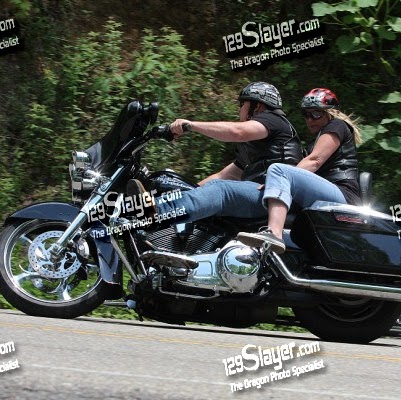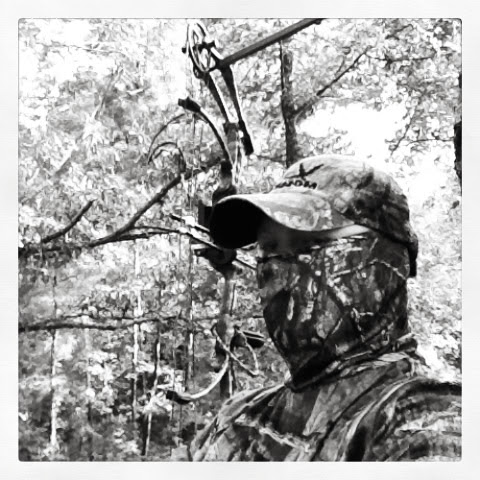Matthew E Colburn
age ~51
from Woodinville, WA
- Also known as:
-
- Matthew W Colburn
- Matt Colburn
- Mathew E Colburn
- Jennifer Colburn
- Phone and address:
-
19304 NE 198Th St, Woodinville, WA 98077
8452261806
Matthew Colburn Phones & Addresses
- 19304 NE 198Th St, Woodinville, WA 98077 • 8452261806
- 41 Farview Rd, Hopewell Junction, NY 12533 • 8452261806
- East Fishkill, NY
- 601 Salvia Ln, Schenectady, NY 12303 • 5183550815
- Guilderland, NY
- 2000 Cedar Bend Cv, Austin, TX 78758 • 5128336485
- 201 E 35Th St #B, Austin, TX 78705
- Redmond, WA
- Danbury, CT
- 601 Salvia Ln, Schenectady, NY 12303
Work
-
Position:Precision Production Occupations
Us Patents
-
Nonlithographic Method To Produce Masks By Selective Reaction, Articles Produced, And Composition For Same
view source -
US Patent:6641899, Nov 4, 2003
-
Filed:Nov 5, 2002
-
Appl. No.:10/287935
-
Inventors:Matthew E Colburn - Hopewell Junction NY
Stephen M Gates - Ossining NY
Jeffrey C Hedrick - Montvale NJ
Elbert Huang - Tarrytown NY
Satyanarayana V Nitta - Poughquag NY
Sampath Purushothaman - Yorktown Heights NY
Muthumanickam Sankarapandian - Yorktown Heights NY -
Assignee:International Business Machines Corporation - Armonk NY
-
International Classification:B32B 300
-
US Classification:428209, 428210, 428195, 427503, 427504, 427510, 427515
-
Abstract:A method for forming a self aligned pattern on an existing pattern on a substrate comprising applying a coating of the masking material to the substrate; and allowing at least a portion of the masking material to preferentially attach to portions of the existing pattern. The pattern is comprised of a first set of regions of the substrate having a first atomic composition and a second set of regions of the substrate having a second atomic composition different from the first composition. The first set of regions may include one or more metal elements and the second set of regions may include a dielectric. The masking material may comprise a polymer containing a reactive grafting site that selectively binds to the portions of the pattern. The masking material may include a polymer that binds to the portions of the pattern to provide a layer of functional groups suitable for polymerization initiation, a reactive molecule having functional groups suitable for polymerization propagation, or a reactive molecule, wherein reaction of the reactive molecule with the portion of the pattern generates a layer having reactive groups, which participate in step growth polymerization. Structures in accordance with the method.
-
Step And Flash Imprint Lithography
view source -
US Patent:6719915, Apr 13, 2004
-
Filed:Jul 19, 2001
-
Appl. No.:09/908765
-
Inventors:Carlton Grant Willson - Austin TX
Matthew Earl Colburn - Waukesha WI -
Assignee:Board of Regents, The University of Texas System - Austin TX
-
International Classification:B44C 122
-
US Classification:216 44, 216 52, 216 67, 216 72
-
Abstract:A method of forming a relief image in a structure comprising a substrate and a transfer layer formed thereon comprises covering the transfer layer with a polymerizable fluid composition, and then contacting the polymerizable fluid composition with a mold having a relief structure formed therein such that the polymerizable fluid composition fills the relief structure in the mold. The polymerizable fluid composition is subjected to conditions to polymerize polymerizable fluid composition and form a solidified polymeric material therefrom on the transfer layer. The mold is then separated from the solid polymeric material such that a replica of the relief structure in the mold is formed in the solidified polymeric material; and the transfer layer and the solidified polymeric material are subjected to an environment to selectively etch the transfer layer relative to the solidified polymeric material such that a relief image is formed in the transfer layer.
-
Imprint Lithography Template Comprising Alignment Marks
view source -
US Patent:6842229, Jan 11, 2005
-
Filed:Dec 29, 2003
-
Appl. No.:10/747795
-
Inventors:Sidlgata V. Sreenivasan - Austin TX, US
Byung J. Choi - Round Rock TX, US
Matthew Colburn - Hopewell Junction NY, US
Todd Bailey - Fishkill NY, US -
Assignee:Board of Regents, The University of Texas System - Austin TX
-
International Classification:G03B 2762
G03B 2758 -
US Classification:355 75, 355 72
-
Abstract:A system of determining and correcting alignment during imprint lithography process is described. During an imprint lithographic process the template may be aligned with the substrate by the use of alignment marks disposed on both the template and substrate. The alignment may be determined and corrected for before the layer is processed.
-
Dual Wavelength Method Of Determining A Relative Position Of A Substrate And A Template
view source -
US Patent:6902853, Jun 7, 2005
-
Filed:May 11, 2004
-
Appl. No.:10/843195
-
Inventors:Sidlgata V. Sreenivasan - Austin TX, US
Byung J. Choi - Round Rock TX, US
Matthew Colburn - Hopewell Junction NY, US
Todd Bailey - Fishkill NY, US -
Assignee:Board of Regents, The University of Texas System - Austin TX
-
International Classification:G03F009/00
G03B027/42 -
US Classification:430 22, 430 30, 356399, 356400, 356401
-
Abstract:The present invention includes a method of determining a relative position of a substrate and a template spaced-apart therefrom, the substrate having substrate alignment marks disposed thereon and the template having template alignment marks disposed thereon, the method including, impinging first and second fluxes of light upon the substrate and template alignment marks, with the substrate and template alignment marks being responsive to the first flux of light defining a first response, and being responsive to the second flux of light defining a second response differing from the first response; and processing the first and second responses to form a focused image of the substrate and template alignment marks on a common plane, with the focused image indicating the relative position of the substrate and the template.
-
Nonlithographic Method To Produce Self-Aligned Mask, Articles Produced By Same And Compositions For Same
view source -
US Patent:6911400, Jun 28, 2005
-
Filed:Nov 5, 2002
-
Appl. No.:10/287905
-
Inventors:Matthew E Colburn - Hopewell Junction NY, US
Stephen M Gates - Ossining NY, US
Jeffrey C Hedrick - Montvale NJ, US
Elbert Huang - Tarrytown NY, US
Satyanarayana V Nitta - Poughquag NY, US
Sampath Purushothaman - Yorktown Heights NY, US
Muthumanickam Sankarapandian - Yorktown Heights NY, US -
Assignee:International Business Machines Corporation - Armonk NY
-
International Classification:H01L021/31
H01L021/469
B32B003/00 -
US Classification:438758, 438762, 438765, 4281951
-
Abstract:A method for forming a self aligned pattern on an existing pattern on a substrate comprising applying a coating of a solution containing a masking material in a carrier, the masking material having an affinity for portions of the existing pattern; and allowing at least a portion of the masking material to preferentially assemble to the portions of the existing pattern. The pattern may be comprised of a first set of regions of the substrate having a first atomic composition and a second set of regions of the substrate having a second atomic composition different from the first composition. The first set of regions may include one or more metal elements and the second set of regions may include a dielectric. The first and second regions may be treated to have different surface properties. Structures made in accordance with the method.
-
Method Of Varying Template Dimensions To Achieve Alignment During Imprint Lithography
view source -
US Patent:6916585, Jul 12, 2005
-
Filed:May 27, 2003
-
Appl. No.:10/446192
-
Inventors:Sidlgata V. Sreenivasan - Austin TX, US
Byung J. Choi - Round Rock TX, US
Matthew Colburn - Austin TX, US
Todd Bailey - Austin TX, US -
Assignee:Board of Regents, The University of Texas Systems - Austin TX
-
International Classification:G03F009/00
G03C005/00 -
US Classification:430 22, 430 30, 430322
-
Abstract:A method of determining and correcting alignment during imprint lithography process is described. During an imprint lithographic process the template may be aligned with the substrate by the use of alignment marks disposed on both the template and substrate. The alignment may be determined and corrected for before the layer is processed.
-
High-Resolution Overlay Alignment Methods For Imprint Lithography
view source -
US Patent:6921615, Jul 26, 2005
-
Filed:Jul 16, 2001
-
Appl. No.:09/907512
-
Inventors:Sidlgata V. Sreenivasan - Austin TX, US
Byung J. Choi - Round Rock TX, US
Matthew Colburn - Danbury CT, US
Todd Bailey - Austin TX, US -
Assignee:Board of Regents, The University of Texas System - Austin TX
-
International Classification:G03C005/00
G03F009/00 -
US Classification:430 22, 430 30, 430322
-
Abstract:A method of determining and correcting alignment during imprint lithography process is described. During an imprint lithographic process the template may be aligned with the substrate by the use of alignment marks disposed on both the template and substrate. The alignment may be determined and corrected for before the layer is processed.
-
Robust Ultra-Low K Interconnect Structures Using Bridge-Then-Metallization Fabrication Sequence
view source -
US Patent:6930034, Aug 16, 2005
-
Filed:Dec 27, 2002
-
Appl. No.:10/331038
-
Inventors:Matthew E. Colburn - Hopewell Junction NY, US
Elbert E. Huang - Tarrytown NY, US
Satyanarayana V. Nitta - Poughquag NY, US
Sampath Purushothaman - Yorktown Heights NY, US
Katherine L. Saenger - Ossining NY, US -
Assignee:International Business Machines Corporation - Armonk NY
-
International Classification:H01L021/4763
-
US Classification:438619, 438637
-
Abstract:A method for fabricating low k and ultra-low k multilayer interconnect structures on a substrate includes: a set of interconnects separated laterally by air gaps; forming a support layer in the via level of a dual damascene structure that is only under the metal line; removing a sacrificial dielectric through a perforated bridge layer that connects the top surfaces of the interconnects laterally; performing multilevel extraction of a sacrificial layer; sealing the bridge in a controlled manner; and decreasing the effective dielectric constant of a membrane by perforating it using sub-optical lithography patterning techniques.
Resumes

Matthew Colburn
view sourceLocation:
United States
License Records
Matthew W Colburn
License #:
P33476 - Active
Category:
Emergency medical services
Issued Date:
Apr 17, 2014
Expiration Date:
Apr 30, 2018
Classmates

Matthew Colburn
view sourceSchools:
Sonrise Christian School Covina CA 2000-2004
Community:
Tammy Ross, Mary George, Christina Strader

Matthew Colburn
view sourceSchools:
Pratt High School Essex CT 1994-1998
Community:
John Bush, Coltt Lorson, Dolores Banning, Lillian Tucker

Matt Colburn | Mascoma Va...
view source
Matt Colburn | Mt. Mansfi...
view source
Pratt High School, Essex,...
view sourceGraduates:
Matthew Colburn (1994-1998),
James Beardsley Jr (1946-1950),
Ferris Galvin (1945-1948),
Edward Varney (1946-1950),
Elizabeth Palau (1946-1950)
James Beardsley Jr (1946-1950),
Ferris Galvin (1945-1948),
Edward Varney (1946-1950),
Elizabeth Palau (1946-1950)

Sonrise Christian School,...
view sourceGraduates:
Matthew Colburn (2000-2004),
Amanda Cook (1995-1999),
Howard Hill (1981-1991),
Beth Oberon (1987-1996),
Randy Helsley (1993-1993),
Priscilla Grantham (1995-1999)
Amanda Cook (1995-1999),
Howard Hill (1981-1991),
Beth Oberon (1987-1996),
Randy Helsley (1993-1993),
Priscilla Grantham (1995-1999)

Humble High School, Humbl...
view sourceGraduates:
Matthew Colburn (1997-2001),
Carolyn Lacour (1981-1985),
David Mireles (1996-2000),
Tabitha Quintana (2007-2011),
Corey Minyard (1979-1983)
Carolyn Lacour (1981-1985),
David Mireles (1996-2000),
Tabitha Quintana (2007-2011),
Corey Minyard (1979-1983)

Mascoma Valley Regional H...
view sourceGraduates:
Matt Colburn (1996-2000),
Tillo Willo (1980-1984),
April Sleeper (1991-1995),
Joseph Okeefe (1979-1983),
Annikah Fiske (1992-1996),
Priscilla Watkins (1962-1966)
Tillo Willo (1980-1984),
April Sleeper (1991-1995),
Joseph Okeefe (1979-1983),
Annikah Fiske (1992-1996),
Priscilla Watkins (1962-1966)
Youtube
Flickr
Plaxo

Matthew Colburn
view sourcemaintenance engineering at Flowers Bakery

Matthew Thomas Colburn
view source
Matthew Colburn
view source
Matthew Colburn
view source
Matthew Colburn
view source
Matt Colburn
view source
Matthew Colburn
view source
Matthew M Colburn
view source
Matthew Colburn
view sourceMyspace

Matthew colburn
view sourceLocality:
brighton/high wycombe, sussex/Bucks
Gender:
Male
Birthday:
1946
Googleplus

Matthew Colburn

Matthew Colburn

Matthew Colburn

Matthew Colburn

Matthew Colburn

Matthew Colburn
Get Report for Matthew E Colburn from Woodinville, WA, age ~51














